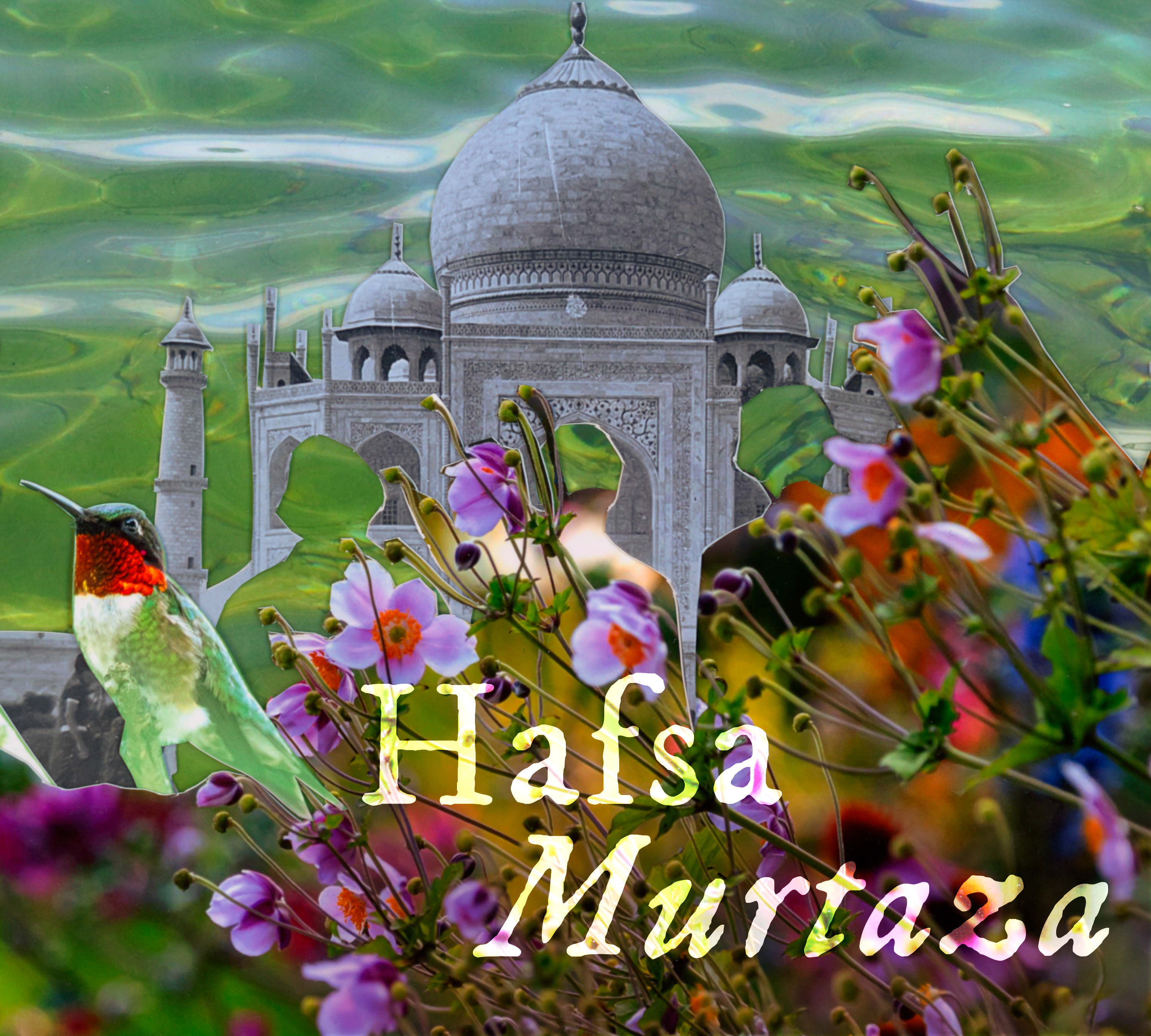The photobook, An Islamic Perspective of the Canadian Landscape, challenges the stereotype that the Islamic World is confined within the Middle East by interpreting Canadian symbols through an Islamic lens. I created composite images by cutting, pasting and collaging personal and family archived photographs, film test strips, cyanotypes, drawings and print media. Composites allow me to create surrealist images, juxtaposing existing places with imagined presences to make viewers see familiar landscapes differently. Prayer mats, prostrating figures and Mughal chhatri minarets superimpose Canadian landmarks, such as “The Tree” in Killbear Provincial Park, The Grotto and Flowerpot Island in the Bruce Peninsula, and Kawartha Lakes backcountry forests.
• • •
In sequence, the images narrate how the Canadian landscape resembles and mimics Islamic prayer postures and architecture. Killbear’s bending tree, iconic for being painted by the Group of Seven, collaged to sit atop a prayer mat, is seen beside a prostrating man to reveal that the symbolic Canadian tree bends towards Mecca, the direction of prayer. Similarly, playing on the idea of the Islamic World being unconfined by geographical borders, a sequence of composite images of the Taj Mahal–taken from a 1980 family photo–and the Shalimar Bagh–taken from a portrait of my grandparents in 1990–are collaged with Canadian flowers and animals. Thus, my photobook reverses stereotypes by comically conveying how the Canadian landscape emulates Islamic culture.
